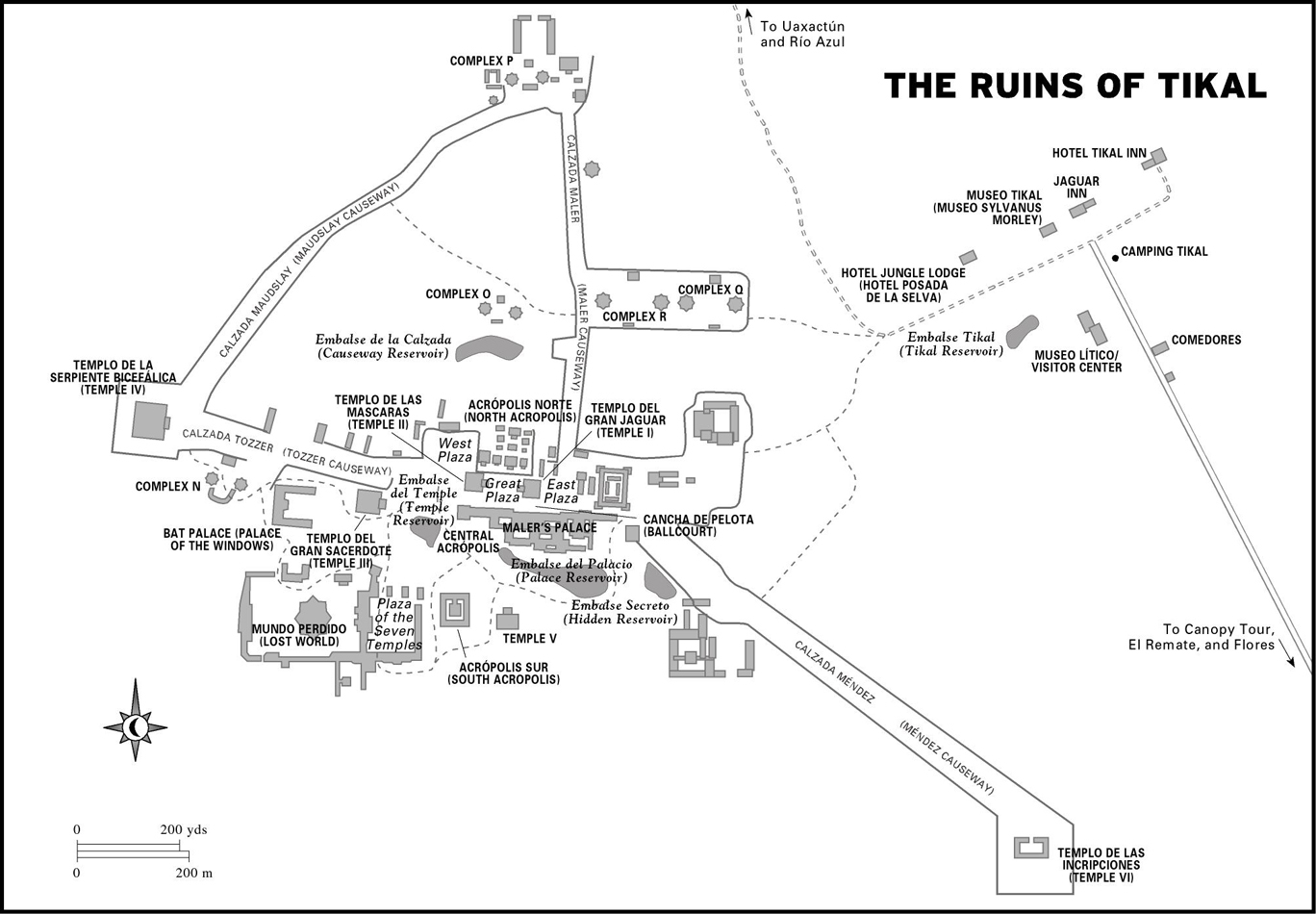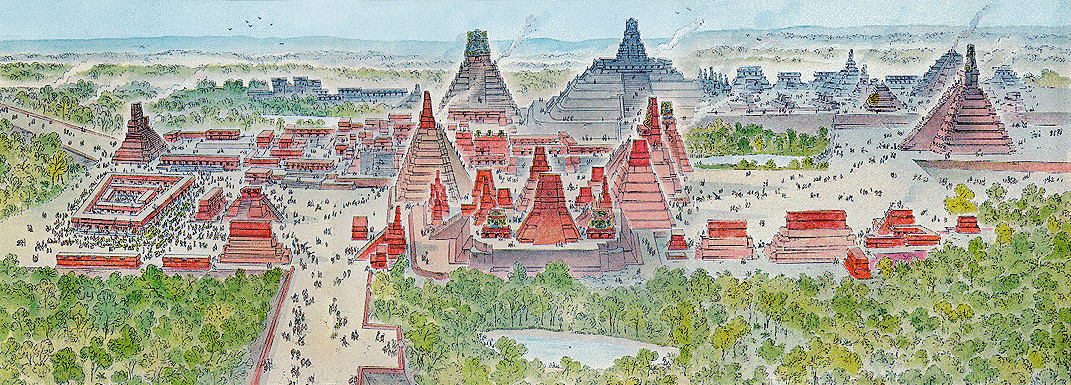Located in northern Guatemala, Tikal was once the major cultural and population center of the Maya civilization, circa 200 to 900 BC. Some of the earliest temples of this ancient urban site date back to 4th century BC, and attracted its first residents sometime in the 6th century BC.
There is a couple of possible reasons for the abandonment, at the end of the 9th century AD. First, the
Maya's long history of warfare, because its belligerent policy.
Second, a mixture of overpopulation, enviromental degradation and
drought.
Since the time of this collapse, almost no one has lived in the area. The forests have grown back and now, the abandoned ruins of Tikal are surrounded by a national park, a 57,600 hectares sanctuary of rainforest and wetlands for endangered wildlife.
In comparison, the center of the city is small: about 400 hectares of temples, pyramids, ceremonial structures, houses, terraces, causeways and plazas, surrounded by another thousand hectares of residential neighborhoods and reservoirs.
At the heart of the city was a system of springs — an important source of water. The Tikal residents channeled the water from the springs and built plazas
that collected rainwater, channeling both into the reservoir. These
technologies allowed the city to expand its agricultural productivity
and support a growing of population.
Over
hundreds of years, as the city grew into one of the most important
places in the region, the Maya who lived there harvested wood in the
surrounding forest and used some of the newly open land for
agricultural.
This Maya people managed their resources as sustainably as possible. But the changes Tikal’s residents made to their landscape left no resilience when something bad came along, it may even have made them more vulnerable in
the face of a climatic change. And things change.
Around the 9th century, a dry period swept through the region and probably strained the most limited of Tikal’s resources: water.
According to David Lentz, a professor at the University of Cincinnati who studies paleoethnobotany and paleoecology with a group of colleagues in Tikal, “When the droughts came, because they had exploited the environment to
the full extent of their technological capabilities, they just were not
able to respond.”
The last monument went up around 869 AD. By the end
of the century, the city was likely largely abandoned.
 |
| -via Latinamerican Studies |
As much as we talk these days about threats to cities and about resilience, it’s hard to imagine cities that are thriving today totally abandoned and left to overgrown forests. But one lesson of Tikal is that, if technologies aren’t adapted to changing conditions — climate or not, a city that was stable for hundreds of years can disappear in just a few decades. And one big disadvantage that modern cities have is that they’re not more sustainable. But we’ve more warning that the climate is changing and clearer knowledge of our own contribution.
“We have some understanding of what’s going to happen,” Lentz says, “whereas I think the Maya were probably caught unawares.”
- via "Ancient City Ruins Warn Us About Our Urban Future" by Sarah Laskow.
| Twittear |

